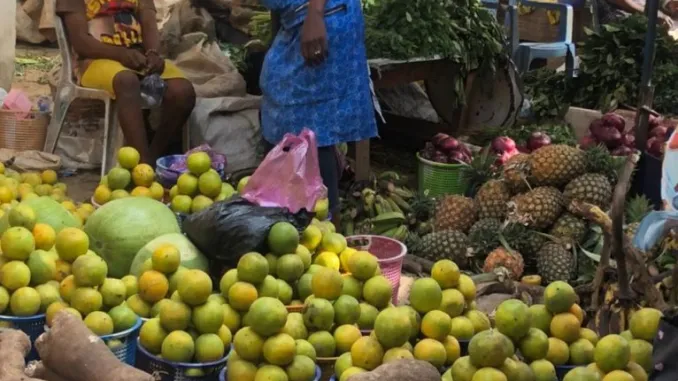To ensure food security globally, CGIAR-IITA, through its African yam bean project at Genetic Resource Center (GRC), has carried out a participatory landrace selection of African yam bean (AYB) at an event in Kano, Nigeria, on 13-14 February.
To ensure food security globally, CGIAR-IITA, through its African yam bean project at Genetic Resource Center (GRC), has carried out a participatory landrace selection of African yam bean (AYB) at an event in Kano, Nigeria, on 13-14 February.
A similar selection exercise was also done in December 2021 on IITA experimental fields in Ibadan and Ikenne stations. The objective is to identify and select preferred accessions by farmers and researchers, which would then be improved to suit the agroecological zones.
In his opening remarks, GRC Postdoctoral Fellow Olaniyi Oyatomi highlighted the importance of the exercise. “To battle hunger and ensure food security, there is a need to explore more food crops that are climate resilient and available for consumption,” he said. He also expressed that the assessment would enable farmers and assessors from the universities, National Agricultural Research Institutes, and agricultural extension agents to analyze and develop a minimum of five accessions based on preferred traits and characteristics identified.
IITA Visiting Scientist and University of Ibadan Geneticist, Morufat Balogun, who is the Principal investigator on the project, described AYB as an orphan crop with little research attention. “AYB has little or no selection of improved genetic traits resulting in poor yields in quantity and quality.” She explained that the research aims are to (i) understand tuber development in AYB, (ii) identify genes for better beans, and (iii) investigate how bean and tuber development influence each other.
Balogun highlighted the nutritional benefits of the crop: “It is competitively high in protein with up to 30 percent, which is higher than many other legumes.” She explained that some accessions produce underground tubers, which are also rich in calories, making them a great energy source.
Unlike most crops that require nitrogen, phosphorus, potassium, and other micro-nutrients to survive and grow, AYB fixes atmospheric nitrogen in the soil. This reduces the use of fertilizers and increases yield and farmers’ profitability.
Wunmi Jegede, a doctoral student of the University of Ibadan working on AYB, explained that the survival rate of the legume is impressive, “Out of the 40 accessions planted, 38 thrived despite the harsh weather in Kano.” Jegede said that, with the farmers and other researchers involved in the selection exercise, it would be easy to push forward their preferred accessions for further field evaluation to facilitate the development of the chosen AYB varieties.
Dr Sanusi Mohammed Kabiru, an agricultural extension specialist from the University of Ibadan, expressed his delight during the selection, “I am excited that the process was a success as we were able to identify not just five, but seven accessions. And I am sure that with more research, in no time, African yam bean will be wildly known and grown”, he said.
African yam bean is a legume with edible seed and tuber characterized by diversity, proximity, and resilience in addressing food security.



